Search the Community
Showing results for tags '2019'.
-
Will be unveiled officially on 25 July in Europe. The latest gen Q3 look less feminine to me, and just like a smaller brother of Q5, Q7...
- 475 replies
-
- 11
-

-
Hi bros, Owns a forester fxt but believe it is appropriate to start new thread on new 2019 forester under their global platform after already available ones for XV, Impreza etc. Cheers. Richard https://www.autoblog.com/2018/08/16/2019-subaru-forester-price-25270/ Interesting options available for USA forester buyers which may tickles to Singapore buyers since understand all still built in Japan and only limited info from recent launch in Taiwan by MI, including pending availability of 2.5l version
- 547 replies
-
- 4
-

-
- new global platform forester
- subaru
- (and 5 more)
-
Quick Fact / Details - Production begins November 2018 - Uses B47 and B58 engines - 330e come with 48V electrical system - Model availabe for new launch (other models possible, but unlikely by end 2019): • 318d, B47, 148hp, manual and automatic, RWD • 320d, B47, 188hp, manual RWD, automatic RWD and xDrive • 330d, B57, 262hp, automatic RWD and xDrive • 320i, B48 168hp 1.6L or 181hp 2.0L depending on the market, automatic RWD and xDrive • 330i, B48, 255hp, automatic RWD and xDrive • M340i, B58, 385hp, automatic RWD (US only) and xDrive • 330e, B48 + electic motor, 248hp, automatic RWD and xDrive (xDrive US only)
- 866 replies
-
- 9
-

-
This thread will focus on the upcoming facelift model 2019 Elantra [update on 26 Jun 2018] [update on 12 Jul 2018] https://www.youtube.com/watch?v=c_3Q1YmUX6E
- 3,821 replies
-
- 8
-

-
Official drawings of the 2019 Mazda3 – keep in mind that at this time, we don’t know if it will be sold as a 2019MY or 2020MY in the U.S.A. and Canada. The new “3” will employ Mazda’s latest Skyactiv-Vehicle Architecture. The platform is said to be stronger while providing a much better ride quality. But the big news for the fourth-generation “3” is the debut of Mazda’s new SkyActiv-X gasoline enginefeaturing Spark Controlled Compression Ignition. This innovative four-cylinder unit combines characteristics of diesel and regular gasoline engines, using spark plug ignition to “control compression ignition”. In short, it ignites the fuel-air mixture similar to a diesel engine promising to combine the fuel efficiency of the former with all the benefits of a gasoline unit, without the emissions penalty. Mazda forecasts an output of around 190 horsepower with 170 lb-ft (230Nm) of peak torque from the 2.0-liter version. That puts it well above today’s 2.0-liter Skyactiv-G that delivers 155hp and 150 lb-ft (203Nm) and on par with the bigger 2.5-liter Skyactiv-G with 184hp and 185 lb-ft (250Nm). The difference here is that Mazda is targeting at least a 20 percent improvement in fuel economy and up to 25 percent less carbon dioxide emissions over the current Skyactive G engines. Mazda Kai Concept Wants To Get Our Hopes Up For New Mazda3
-
The seventh generation Lexus ES will be the first to be introduced to markets in Western Europe. It follows the new LS flagship sedan and LC coupe in carrying forward a new chapter in Lexus design that has a much stronger emotional quality. The eye-catching styling, made possible by the use of an all-new Global Architecture - K (GA-K) platform, will have particular appeal to customers in the region, together with a more engaging driving experience and even higher safety provisions. The new ES is built on the all-new Global Architecture - K (GA-K) platform, giving Lexus the opportunity to explore the limits of mid-size luxury sedan design. The car is 65 mm longer (4,980 mm), 5 mm lower (1,445 mm) and 45 mm wider (1,865 mm) than its predecessor. The 50 mm longer wheelbase (2,870 mm) allows the wheels to be pushed closer to the car's corners, with wider front and rear treads (+10 and +37 mm). The range will include the ES 300h, on sale from December 2018, powered by a new self-charging hybrid system, together with the ES 200, ES 250 and ES 350 petrol engine models that will go on sale from September 2018. Lexus ES 250 Lexus ES 300h F SPORT
- 840 replies
-
- 17
-

-
- 598 replies
-
- 9
-

-
- 35 replies
-
- 8
-

-
- mercedes-benz
- mercedes
- (and 8 more)
-
I have been planning this road trip for a couple of months already. Read through the various blogs of ppl who have done the same road trip. Also find out what is the current procedure to cross the Thai border at Sadao. Booked the hotels, printed and filled the necessary forms to cross into Thailand by car. Arranged with my brother to come along with me for the drive up to Bangkok, then he flies home from Bangkok. My wife will fly into Bangkok and join me on the trip back to Singapore. So its basically chiong all the way up and take the scenic route back while enjoying the drive. SG -> Hatyai -> Surat Thani -> Hua Hin -> BKK -> Hua Hin -> Surat Thani -> Hatyai -> Ipoh -> KL -> SG The day before the set off, filled the car to the brim and took photo of my odometer as this is going to be a very long road trip. 6th July 2019 (Saturday) Kiss and hug my wife goodbye and set off at 4am to pickup my brother. I didn’t want to set off so early but my brother wana avoid the causeway jam. There were indeed no jams at all and we are into NSHW. I took the first drive. Stopped over at Pagoh Reststop for pee and topped up TNG card. We switched drivers, my brother took over the drive. Next stop was Tapah Reststop as the sun begin to rise. Fuel the car to the brim and I drove now. Our initial plan was to stop at Alor Setar and enter Thailand the next day. But since we are so early, might as well try to enter it the same day. By 1pm, we arrived at Changlun town. It is the last town in MY before reaching the border. It is only 10km to the border. We went to the Petronas station for fuel and to get our 3rd party Thai insurance and white card. Then drove further ahead to a coffeeshop for lunch, our first meal of the day. We had bak kut the and was pretty disappointed as there is no pork ribs. Owner said the ppl here are stingy and not willing to pay so cannot cook pork rib. So funny. Anyway, just fill the tummy and move on. Arriving at Bukit Kayu Hitam, MY side is a new custom and immigration building. No tolls/road charge/VEP to be paid. Just stamp passport and we are off, same as SG/MY crossing. However as we exited the building, we are stuck in the jam already. Traffic has built up from the Thai side till MY custom. Inching forward every few 5-10mins, it was painful. When we were near the Thai immigration checkpoint, the police ask my brother, the passenger to alight and go through the normal walk-in immigration. He did the same for cars around me, asking passengers to alight. When I was just four cars away from the counter, I messaged my brother to check where he is in the human queue. Alamak, he still queuing at the outside of the building, not yet even enter it. So I did what everyone in front of me did, I called my brother to come over to my car and we will clear immigration together. The process is very weird. You drive up to the counter, everyone alights from the vehicle and stand in front of the counter to clear immigration. The immigration officer don’t care how many ppl in the vehicle, he will just process your documents. So thatz what everyone did, calling their passengers to join them at the counter. The human queuing also has those tour buses passenger so would take longer time. After having my passport stamped, I proceeded to the counter in the next building to “import” my car into Thailand. There was no queue at all here. I walked up and let the officer process the documents. He printed out the importation form and told me to let officer sign and remember to return it once I exited Thailand. As I begin to walk away, the officer shouted at me to come back. He kept saying let officer sign and point to his back, the other guy seating behind him. I tot I was to drive the car up and there is an officer at the gate to sign it. So I handed the form to the officer to sign and he also reminded me to return the form upon leaving Thailand, otherwise 10,000 baht fine. By then, there was a guy walking to me and told me that my car has breakdown as my brother was unable to start the car. Therefore there was a jam at my lane. Oops, went back and saw my brother trying to start the car to no avail. Then spare remote I passed to him got no more battery juice and he don’t know how to start it manually. Faster start and drove off!!! Took us a total of 2 hours to clear this Thai immigration. Woohooo, we are in Thailand. As we were stuck in the jam, I quickly made an online booking with The Regency at Hatyai for the night. We gave up our hotel in Alor Setar and went straight into Hatyai. Hatyai is 50km away from Sadao border, the drive there was smooth. Not much traffic jams. Using Waze to guide us there. The Regency has underground private carpark and it is in the night street stalls area, just opposite Lee Gardens Plaza hotel. Very well known area. The hotel room was dated, like in the 80’s feel. We rested in the hotel room till dinner time and proceeded to take a tuk tuk to Greenway market for dinner. After that we came back to the hotel area and walked the street stalls. Then we rest for the night. Makan photo here : https://www.mycarforum.com/topic/2711591-makan-in-thailand/?p=6711758
- 80 replies
-
- 26
-

-
Hi all, since this car was release on May 2019, would like to start a thread on the facelift model. As 2019 model all comes with standard Honda sensing, maybe we can share ideas and mods?
- 294 replies
-
Scheduled to be unveiled in Sweden on 21 Feb. I personally think Volvo has another winner in it stable! [thumbsup]
-
Strong hints of Audi (Q7) and maybe even the current Civic Sedan. And the extended LED DRL, which combined with the long chrome stripe across the entire bonnet is a board move... Let see Hyundai will become the trend setter this time... Hyundai Motor revealed first images of its next-generation Sonata, showcasing a sporty four-door-coupe look. The eighth-generation Hyundai Sonata embodies Hyundai's Sensuous Sportiness design concept. It is a fully transformed vehicle following the release of the seventh-generation Sonata in March 2017. "Sonata celebrates innovative coupe-like silhouette," said Sang Yup Lee, senior vice president and head of the Hyundai Design Center. "A short overhang, sloping roofline and low deck lid create a balanced feel, and Hyundai's signature chrome accent now goes all the way into the hood, making it look even longer. It also has LED lighting built in. These cues bring the Sensuous Sportiness design to life." The all-new Sonata takes its inspiration from the award-winning Le Fil Rouge concept, which debuted at the 2018 Geneva International Motor Show. Like the concept car, the production Sonata attracts immediate attention with its Sensuous Sportiness design. Sensuous Sportiness is defined by the harmony between four fundamental elements in vehicle design: proportion, architecture, styling and technology. Sonata has a distinct tension on the side using a harmonious blend of layered crisp body lines and pure volumes. Concave and convex forms are also carefully orchestrated to provide a sexy, coupe-like character. The new Hyundai Sonata has a much sportier look than its predecessor, with a 30 mm lower height and a width extended by 25 mm. Its wheelbase is enlarged by 35 mm, and its whole length by 45 mm. The new Sonata's frontal section is defined by two elements: a bold, voluminous shape evoking a smooth sphere and a cleanly demarcated hood. Furthermore, the Digital Pulse Cascading Grille, which resembles the grille of a sports car with its rhythmic visuals, is sleekly connected to the hood, strengthening the overall perception of the front. In particular, the Daytime Running Lights, embedded with Hidden Lighting Lamps-the first for a Hyundai vehicle-are a chief design innovation that incorporates state-of-the-art lighting technology, forming the Sonata's light architecture. The Hidden Lighting Lamps appear to be of a chromic material when switched off and become dramatically lit when turned on. The light architecture was initially revealed through Hyundai's HDC-2 concept car at the Busan Motor Show in June last year. It was created by fleshing out the form of the lamp and making it into a powerful design element. Along with the Sensuous Sportiness concept, the light architecture defines the design identity of future Hyundai cars. The side sections of the Sonata are accentuated by the light architecture, which connects two chromic lines seamlessly linking the windows and daytime running lights. Through these two characteristic lines, the Sonata effuses an athletic and elegant charm. The all-new Hyundai Sonata has a wide, layered long hood, a very low stance and a sleek roofline. The feeling of width is also achieved with ultra-wide taillights. The light architecture is also applied to the interior space with the ambient mood lamp illuminating dashboard and doors. In the interior, the instrument panel is rich and modern, and the recognizable winged shape is inspired by a Stealth aircraft. This shape almost levitates or floats when looked at, and this philosophy carries into the long armrests. Satin chrome accents enhance this effect. Designers compressed the height of the dashboard and HVAC vents as much as possible to aid the light-weight feeling, while modern, light fabric colors and leathers provide a fresh and freeing ambience for the driver. The clean and sleek design is carried through the center-gauge cluster display. Designers aimed to alleviate the distracting large screens featured in many luxury cars today and instead threaded the two displays together on the 2020 Sonata, using a unique S curve. These displays are seamless, with no parting lines, and have capacitive touch buttons. Additional features include a satin chrome accent on the steering wheel, which looks like an aircraft yoke, and shift-by-wire transmission controls to free up storage space.
- 188 replies
-
- 12
-

-
At the first glance, I can't tell that it is a all new generation... 50 TDI Quattro S Line
- 110 replies
-
- 10
-

-
- audi
- mid sized sedan
-
(and 8 more)
Tagged with:
-
31st SEA Games: Football[M]Group Stage - EP 3 4:55 PM - 7:00 PMG Season 1, Episode 3 | Cambodia vs Singapore (Live) Singapore takes on Cambodia in its third group stage match of the Games. CAM 0 - 1 SIN
- 52 replies
-
Ford is calling the 2019 Focus their most “accomplished and technically-competent Focus ever”, with the car boasting a new human-centric design philosophy meant to unite exterior styling with class-leading aerodynamics and a more spacious and well-built interior. “We wanted our all-new Focus to be a product customers fall in love with, and stay in love with,” said Ford Europe design director, Amko Leenarts. “Inside and out, our new design philosophy is about creating memorable moments of interaction that build and maintain the relationship between human being and machine.” By extending the wheelbase a full 53 mm, designers managed to position the wheels higher up into the sheet metal, thus reducing the perception of overall length and mass. Add the short overhangs and rearward cabin position and you end up with a dynamic-looking hatchback, one that is said to deliver “class-leading aerodynamic efficiency”. As for styling, even though Ford went with a recognizable front fascia, the rest of the car looks significantly different than the outgoing model, regardless of version. The all-new Focus can be ordered as a Vignale, ST-Line, Active and Titanium, in either 5-door or Estate form. The Vignale was given elegant ornamentation such as the satin aluminum finishes for the roof rails, fascia and rocker inserts, as well as a signature grille mesh. The ST-Line on the other hand looks more aggressive with its large diffuser and functional roof spoiler – it also comes with signature lower wing elements. Customers will be able to order their new Focus in one of 13 exterior colors, including Orange Glow, Desert Island Blue and the Vignale-exclusive four-coat dark Mulberry. The all-new Focus features a wide range of advanced technologies, among them Level 2 automation and several systems meant to make driving the car a more comfortable and less demanding experience. For example, Ford Co-Pilot360 technologies enhance safety, driving and parking, while ACC with Stop & Go, Speed Sign Recognition and Lane-Centring will make long journeys less stressful. The ACC works at speeds of up to 200 km/h (125 mph). Then there’s the Adaptive Front Lighting System with Predictive curve light and Sign-based light. This tech pre-adjusts headlight patterns for maximum visibility before reaching a curve, intersection or roundabout. The new Focus is also the first Ford vehicle in Europe to feature a Head-up display (HUD). Other active safety features includes: Active Park Assist 2, Park-out Assist, Pre-Collision Assist with Pedestrian and Cyclist Detection, Evasive Steering Assist, Blind Spot Information System with Cross Traffic Alert, Rear wide-view camera, Wrong Way Alert, Ford MyKey and Post-Collision Braking. Ford expects the all-new Focus to earn a 5-star safety rating during crash tests. They’re basing their expectations, in part, on the 40% increase in front crash load capability coming from the new C2 platform. Focus owners can choose between Ford EcoBoost petrol and EcoBlue diesel engines, said to meet the latest Euro 6 emissions standards. They can be mated either to six-speed manual transmissions or a new eight-speed automatic. Opt for petrol and you’ll find yourself having to choose between a 1.0-liter EcoBoost (107g/km CO2) or a new 1.5-liter EcoBoost (122 g/km CO2). While the former is offered with 85 PS (83 HP), 100 PS (98 HP) and 125 PS (123 HP), the latter is more punchy at either 150 PS (148 HP) or 182 PS (179 HP). The diesel options are as follows: new 1.5-liter EcoBlue (91 g/km CO2) with either 95 PS (93 HP) or 120 PS (118 HP) – both offering 300 Nm (221 lb-ft) of torque, and a 2.0-liter EcoBlue (112 g/km CO2) good for 150 PS (148 HP) and 370 Nm (273 lb-ft) of torque. Ultimately, it’s only the 125 PS 1.0-liter EcoBoost, 150 PS 1.5-liter EcoBoost, 120 PS 1.5-liter EcoBlue and 150 PS 2.0-liter EcoBlue units that can be mated to Ford’s new 8-speed automatic. Everything else will only work with a 6-speed manual. T.B.C.
-
Would this come and sell well in Singapore? First Look: With the 2019 RAV4, Toyota gives its best-selling crossover a new rugged look http://www.nydailynews.com/autos/news/2019-toyota-rav4-preview-article-1.3900050 Considered the first-ever compact crossover, the Toyota RAV4 debuted in 1994. This brings up two thoughts: 1) that CUVs have been around much longer than the current sales craze indicates, and 2) how are there only four generations of RAV4 in 24 years? Well, the first-generation slogged through a 16-year cycle, but as consumer demands increased, vehicle life cycles decreased in retrospect. Which brings us to today’s world debut of the all-new 2019 RAV4. And the grandfather of the crossover segment is looking younger than ever: less cute ‘ute and more brute youth. Finally fashionable At first glance, the only indication that the new RAV4 is indeed a Toyota is its ever-familiar oval emblem. Outside of that, the crossover evokes brawn and strength—words that generally describe true body-on-frame trucks and SUVs rather than car-based, unibody crossovers. But the 2019 RAV4 is full of bold character lines, chiseled features, and a grille that looks just as annoyed to be sitting in traffic as you are. Even its fenders, which now feature squared-off black plastic cladding instead of body-colored metal look (and I can’t believe I’m saying this) appropriate and attractive. The new RAV4 will drop a trim (Platinum) but details for the full lineup are sparse. However, an XSE Hybrid model is all-new and with it comes standard two-tone exterior paint. A black roof is paired with shades of gray, white, silver, and a new blue to give the hybrid a distinctive exterior style but in an atypical hybrid way (i.e., not frumpy looking). Adventure grade models also receive the new double-color scheme but with a white roofline similar to smaller sibling CH-R. This is available only on black, blue, and a new of-the-land greenish hue called Lunar Rock. For 2019, with the Platinum trim gone, the Limited is left as the sole heir to RAV4 luxury. This top-of-the-line model is outfitted with 19-inch wheels and chrome accents to further distinguish its premium-ness. Tech and touchpoints Of course, the Limited receives more than just flashy alloys and shiny bits. Standard features include a power moonroof, 8-way power-adjustable driver’s seat with lumbar support, a newly-designed 7-inch infotainment touchscreen, and a rearview mirror camera, which is a North American-first for Toyota. Similar to what is available on General Motors’ premium brands, Toyota’s Digital Display Rear Mirror looks and acts like a conventional rearview mirror but toggle a switch and it will also display a high-definition, wide-angle view of what’s behind the vehicle. The Limited doesn’t hoard all the fancy gear, though, as all 2019 RAV4 models will be equipped with Entune 3.0, which includes Verizon-powered Wi-Fi connectivity, Amazon Alexa compatibility, and Apple CarPlay integration. Available Entune upgrades include Plus for a larger 8-inch touchscreen and satellite radio or Premium, which adds navigation. Also available will be up to five USB ports, wireless device charging, and an all-new 11-speaker JBL sound system. Increased performance capabilities The 2019 RAV4 will be powered by two engines: a 2.5-liter 4-cylinder paired with an 8-speed automatic, and a 2.5-liter 4-cylinder second-generation Toyota Hybrid System II engine mated to a CVT. Horsepower and fuel economy figures are not yet available but the automaker says consumers can expect improved, even best-in-class, numbers with the new model. Driving dynamics are said to have improved as well, particularly with the XSE Hybrid, which Toyota claims is the best-handling of the RAV4 lineup. The new hybrid features a sport-tuned suspension along with improved shock absorbers and springs. There also are three all-wheel-drive systems for the 2019 RAV4. Entry-level models can be optioned with the carryover AWD system, hybrids are available with AWD-i, and a new-to-Toyota dynamic torque vectoring AWD, which will be standard on Limited gasoline models and Adventure grade RAV4s. Featuring a rear driveline disconnect, the new torque-vectoring AWD system can send 50 percent of the engine torque to the rear wheels as well as distribute it to the left or right to improve handling. Additionally, when equipped with AWD, Adventure models are outfitted with Multi-Terrain Select as standard. The new system offers four driver-selectable traction modes (snow, mud, sand, and rocks) that can be adjusted on the fly. But performance isn’t the only priority in the new RAV4. For 2019, the lineup will be equipped with Toyota Safety Sense 2.0, the automaker’s second generation of advanced safety and driver-assistance technologies. Standard on all vehicles, the technology package includes: pre-collision with pedestrian detection, adaptive cruise control, lane departure warning, lane keep assist, automatic high beam as well as new-for-2019 lane tracing assist (enabled only with ACC) and road sign assist (identifies and alerts to upcoming signage). The 2019 Toyota RAV4 will go on sale at the end of this year while hybrid models will follow suit in early 2019. We expect final specs and pricing closer to its on-sale date, if not sooner. Past RAV4s XA10 XA20 XA30 XA40
- 568 replies
-
- 7
-

-
I am starting this new thread/topic on Subaru EyeSight as there have been many discussions among the Impreza, XV and Forester forums, and many Owners are cautious about having solar film fitted to the front windscreen. I collected my SK Forester last week and has been exploring the EyeSight system since then. Let's start with MI disclaimer whereby buyer has to put his/her signature on the declaration form. In my opinion, the disclaimer is very relevant. Why is this so? The EyeSight system allows the driver to drive with it OR to manually switch-off either lane-departure detection or pre-collision braking or both features altogether. The 2 switches are located on the cabin roof, above the rear view mirror. In other words, Subaru (or anybody else) will not know whether the EyeSight was in operation should a front collision occurs. Also, EyeSight will not work above 60 km/h (+ / - ). What will happen if a crazy driver drives at high speed and crash his Subie and then seek legal compensation from Subaru for the "defective" EyeSight system. I am sure all other car manufacturers that offer driver assist crash avoidance system will insist buyers to sign the Disclaimer form. At the end of the day, the driver is still fully responsible for the vehicle safety, not technology. To be continued ...
- 52 replies
-
- 5
-

-
- subaru
- windscreen solar film
- (and 8 more)
-
Hi everyone, I'm new here. Not sure if this is the correct place to post but I'm looking for a workshop to repair my Stonic 2019 model's front bumper grille above number plate (refer to attachment). Got chipped off after bumping into wall at carpark. Been to a few workshops at Ubi area but all told me no parts available. Was thinking of going back to C&C however the cost should be quite high. Appreciate any advice here. Thanks in advance! 😊
-
Although the car now look much sharper and modern than before, the changes are too subtle to qualify it as a all new generation model. At the Los Angeles Auto Show, Mazda revealed the all-new CX-5 SUV complete with an updated design and a selection of new technologies. The most obvious differences between the new model and the outgoing one is the heavily updated exterior styling. Unsurprisingly, it takes much of its inspiration from the smaller CX-3 and larger CX-9 with Mazda saying that it wanted to create a vehicle that suited the phrase ‘refined toughness’. As such, the front of the new CX-5’s body is now 10 mm wider than previously and helps to give the car an improved stance on the road. Additionally, the A-pillars have been pushed back by approximately 35 mm and a new grille has been adopted. Other key design updates include thinner headlights and taillights and an overall sportier appearance, aided particularly through the re-designed roofline and sharp C-pillars. The interior of the new CX-5 has also been suitably refreshed and revised and incorporates a three-spoke steering wheel, push-button start and a 4.6-inch color display within the instrument cluster. There’s also a 7-inch display now resting on top of the dashboard, similar to most current Mercedes-Benz models. There’s also a 10-spoke Bose premium sound system and the Mazda Connect connectivity system which works in conjunction with smartphones. While engines will differ between markets, Mazda says the new CX-5 will receive its clean, 2.2-liter SkyActiv-D diesel engine and the SkyActiv-G 2.0 and SkyActiv 2.5 direct-injection petrol engines. All of these engines can be mated to either a six-speed automatic or six-speed manual transmission. As standard, they are front wheel drive but the brand’s all-wheel drive system is available. Another highlight of the new model is that the strengthened chassis has resulted in a 15.5 per cent increase in torsional rigidity over the outgoing model. This is largely due to the increased use of ultra-high-tensile steel on the A-pillars and B-pillars. The improved aerodynamics of the new model also lower road noise by around 1.3 dB over rough surfaces. On a technology and safety front, the 2017 CX-5 includes Mazda Radar Cruise Control and Traffic Sign Recognition which is able to read speed limit and other road signs and display them on the 4.6-inch display. What’s more, the new model includes a torque vectoring system where torque levels can be altered based on steering wheel inputs, aiming to both improve the ride and great handling abilities.
- 550 replies
-
- 6
-

-
- mazda
- 2019 mazda albuquerque
-
(and 6 more)
Tagged with:
-
Just unveiled in Paris, and you see it first... The new Mercedes-Benz B-Class puts the emphasis on sport with the Sports Tourer. It looks more dynamic than its predecessor and is more agile on the road while offering greater comfort. Its avant-garde interior makes for a unique feeling of space with the distinctive design of the instrument panel. One of the special features is a basic volume, which drops away towards the occupants and has cutouts in the area of the driver and front passenger. The intuitive user interface of the adaptive MBUX multimedia system is ground-breaking. Its strengths include brilliant graphics, "Hey Mercedes" voice control, a standard touch screen and functions such as MBUX Augmented Reality. When it comes to active safety, state-of-the-art driving assistance systems make the B-Class one of the segment leaders with functions carried over from the S-Class. In addition, the interior is now more spacious, while the engines are more efficient and cleaner. The eight-speed dual-clutch transmission makes its debut. Start of sales for the new B-Class is 3 December 2018, with delivery due to begin in February 2019. "More practical than ever, more chic than ever," is how Britta Seeger, Member of the Board of Management of Daimler AG, responsible for Mercedes-Benz Cars Sales, characterises the new B-Class. "In our portfolio of compacts, it's the perfect vehicle for the whole family. And MBUX - the new Mercedes-Benz User Experience - provides also the B-Class with an all-new customer experience with functions that were previously the reserve of the luxury class." "The latest derivative of the new generation of compact cars from Mercedes-Benz, the B-Class writes a further punchy chapter in the success story of the dynamic Mercedes-Benz Sports Tourer," says Gorden Wagener, Chief Design Officer of Daimler AG. "With its emotional yet purist design, the new B-Class blends seamlessly into the design language of Sensual Purity." The designers' brief was to make the new Mercedes-Benz B-Class stand out visually from the world of minivans. That brief was accepted and executed, with the long wheelbase (2729 mm) with short overhangs, slightly lowered roof line and larger, 16- to 19-inch wheels making for dynamic proportions. The relatively squat, progressive front end with flowing transition from bonnet to A-pillar and on to the windscreen, along with the muscular shoulder of the body, underlines the sporty overall look. The same is true of the low-profile headlamps, the inside of which is already high-grade, detailed and precisely designed on the basic model with H7 headlamps and LED daytime running lights. When ordered with LED headlamps or higher, the B-Class comes with its own daytime running light signature in the form of a double torch. The optional MULTIBEAM LED headlamps have an especially sporty look. They allow fast, electronically controlled adjustment of the headlamps to suit the current traffic conditions. This feature from the luxury class, which made its debut in the compact segment in the new A-Class, now produces striking looks and added safety also in the new Mercedes-Benz B-Class. At the back, the width of the vehicle is accentuated by two-part lamps, reflectors integrated in the bumper and a distinctive black bumper bottom section with diffuser look and chrome trim strip. The large roof spoiler, along with high-gloss black spoilers at the sides of the rear window, makes for improved aerodynamics while ensuring a sporty appearance. The cd value of the new B-Class starts at 0.24 (predecessor: 0.25). The lower roof line further contributes to a best-in-class airflow due to the smaller end face of the car. In addition, the aerodynamics engineers have reduced the wind noise thanks to extensive detail work. The benefits: a high level of alertness as well as the ability to engage in a relaxed conversation. The improved seat geometry and lower belt line make for an even more generous feeling of space than in the previous model. The driver sits 90 millimetres higher than in an A-Class, thus enjoying an especially good all-round view - also thanks to optimised cross-sections of the roof pillars, which obscure less of the surroundings. Interior design: revolution, the second The interior of the B-Class is as avant-garde as the much-praised revolutionary interior architecture of the new A-Class, yet distinctive: while the instrument panel of the sister model is split into two horizontal basic bodies, that of the Mercedes-Benz B-Class has a single basic volume, which drops away towards the occupants and has cutouts in the area of the driver and front passenger. The cutout in front of the driver houses the fully free-standing display unit, which comes in three different versions: with two 7-inch displays (17.78 cm), with one 7- and one 10.25-inch display (26 cm) and, in the Widescreen version, with two 10.25-inch displays. A head-up display is optionally available. The five round air vents feature a high-grade turbine look with finely styled air ducts, inspired by the world of aviation. In the Style equipment line, the vent surround is colour-accentuated in the depth of the vent geometry to give the impression of an afterburner. The centre console with touch-based control and input system comes with a black panel look similar to the E-Class. The ambience lighting with 64 colours and ten colour worlds, a unique selling point in this segment, allows individual adjustments, even to suit the mood. The seats offer a flatter and, therefore, more comfortable seating position as well as a larger adjustment range, which also increases the maximum headroom. There is also more space in the width: at 1456 millimetres (plus 33 mm), the front elbow width now has the dimensions of a mid-range vehicle. ENERGIZING seat kinetics: supports changes of posture With seat climate control and multicontour seats with massage function, the new B-Class is available with optional extras that were previously reserved for vehicles from much higher segments. This opens the way to even better seating comfort. The new ENERGIZING seat kinetics is particularly good for the back. It can support orthopaedically beneficial changes of posture by regularly making minute adjustments to the angle of the seat cushion and backrest. The innovation is available for the front seats in combination with all-electric seat adjustment with memory function. Variable rear seats and optimised luggage compartment layout The interior has been fine-tuned in many places: the improved entry aperture to the centre tunnel in the rear makes for a more accessible middle seat. The rear seat backrest comes as standard with a 40:20:40 split. Depending on version, from mid-2019 it will be possible for the rear seats to be moved by 14 centimetres and for the backrest to be folded into a steeper position to vary the capacity of the luggage compartment behind the rear seats between 455 and 705 litres. Although the capacity is roughly the same as in the previous model, the luggage compartment can be more efficiently used thanks to the improvements. With the rear seat folded down and luggage loaded to the roof, the luggage compartment, which is flat thanks to the adjustable load compartment floor, can accommodate up to 1540 litres behind the front seats. A folding backrest of the front passenger seat (optional extra, expected to be available from mid-2019) makes for an even longer loading length. An EASY-PACK tailgate is optionally available. It can be conveniently opened or closed automatically at the press of a button, even by means of a foot movement in combination with optional HANDS-FREE ACCESS. MBUX - Mercedes-Benz User Experience: unique experience What goes for A also goes for B: the new B-Class is the second car model after the A-Class to feature the MBUX (Mercedes-Benz User Experience) multimedia system, which ushered in a new era with Mercedes me Connectivity. Its ability to learn thanks to Artificial Intelligence makes the system unique. MBUX is customisable and adapts to the user. It thus creates an emotional link between vehicle, driver and passengers. Its other strengths include touch screen control as standard as well as, depending on equipment, a high-resolution Widescreen cockpit, navigation display with Augmented Reality technology plus intelligent voice control with natural speech recognition, which is activated by saying "Hey Mercedes". The touch screen is part of the integrated MBUX touch control concept - a trio consisting of touch screen, touchpad on the centre console (optional) and touch controls on the steering wheel. MBUX is a revolution of the user experience in the car. Emotively appealing showcasing features underline the comprehensibility of the control structure and thrill through brilliant 3-D maximum-resolution graphics which are rendered, i.e. calculated and displayed, in real time. A head-up display is also available. New and improved Mercedes me connect services were launched with the new MBUX infotainment generation. These include navigation functions based on Car-to-X communication and Vehicle Tracking, which makes it easier to find the parked vehicle, as well as a notification function in the event of the parked vehicle being bumped or towed away. The Mercedes me collection of apps can be placed as an icon on the screen in a user-friendly way, and can be freely sorted on the homepage like all other main applications. In addition, online content, such as current petrol station prices, can optionally be displayed. Online updating is a simple way of allowing new content to be made available in MBUX. The new Mercedes-Benz B-Class is already set up for private car sharing: Mercedes me allows the new compact car to be shared with friends and family members. Operation is simple and secure using the Mercedes me Car Sharing app. The new Mercedes me connect services On-Street Prediction, Real-Time Information and Off-Street Information can save Mercedes-Benz drivers valuable time and reduce their stress levels while at the same time cutting their fuel consumption and emissions when searching for a parking space. The real-time information is based, among other things, on Mercedes-Benz vehicles that have just left a parking space or driven past potential parking spaces. Intelligent Drive: functions from the S-Class The new B-Class comes with driving assistance systems with cooperative driver support, thus providing one of the highest levels of active safety in this segment with functions from the S-Class. For the first time, the Mercedes-Benz B-Class is able to drive semi-autonomously in certain situations. To do so, it employs improved camera and radar systems to anticipate the traffic up to 500 metres ahead while using map and navigation data for assistance functions. For example, Active Distance Assist DISTRONIC as part of the Driving Assistance package is able to support the driver in many route-specific situations, predictively and conveniently adjusting the speed, e.g. when approaching bends, junctions or roundabouts. Also on board are Active Emergency Stop Assist and intuitively understandable Active Lane Change Assist. The new B-Class comes as standard with extended Active Brake Assist, which can help mitigate the severity of rear-end collisions with slower-moving, stopping or stationary vehicles ahead - and now even with crossing pedestrians or cyclists - or prevent them altogether. The new B-Class, too, was developed and tested at the new Vehicle Safety Technology Centre (TFS). The design of the vehicle structures with regard to geometry, material thickness, joining technique and material quality incorporates findings from real-world accidents. Many bodyshell components are made of high-strength and ultra-high-strength steel to obtain high strength with lowest possible weight, because the core of the safety design of the body is the highly stable passenger cell. Driver and front passenger are provided with three-point seat belts with pyrotechnic belt tensioners and belt force limitation. In combination with the PRE-SAFE® system (optional extra), the front seats are additionally equipped with electrically reversible belt reel tensioners. Both of the outer rear seats are fitted with a seat belt with reel tensioner and belt force limiter. The new Mercedes-Benz B-Class comes as standard with airbags for driver and front passenger, kneebag for driver and windowbags and sidebags (combined thorax/pelvis bag). Rear sidebags are optionally available. Double powertrain debut: new powerful two-litre diesel is Euro 6d compliant, new eight-speed dual-clutch transmission Compared to its predecessor, the new B-Class is in all cases powered by new, efficient engines, all of which comply with the Euro 6d-TEMP limits. Making its debut is a transverse-mounted version of the OM 654 two-litre diesel with 110 kW and 140 kW, aluminium crankcase and stepped-bowl combustion process. Thanks to extended exhaust aftertreatment with an additional underfloor SCR catalyst, the B-Class with the OM 654q is the first compact model from Mercedes-Benz to be certified in accordance with the Euro 6d standard, which will become mandatory for new models only on 1.1.2020. The large diesel represents an addition to the four-cylinder diesel (OM 608) already known from the A-Class with 1.5-litre displacement, up to 85 kW and up to 260 Nm. Also available are two four-cylinder petrol engines of the M 282 series with 1.33-litre displacement and 100 kW/120 kW. Innovations include cylinder management (in combination with 7G-DCT transmission), delta shape of the cylinder head and particle filter. The new Mercedes-Benz B-Class is initially available exclusively with dual-clutch transmissions. New here is the eight-speed 8G-DCT, which is used in combination with the larger diesel engine. Other new engines will follow, as will models with 4MATIC all-wheel drive. A 43-litre tank is installed as standard, while a 51-litre tank is optionally available, depending on the engine. The following five engine variants will be available at the launch of the B-Class: B180 (100kW/136hp, 200Nm); with 7G-DCT dual-clutch transmission (combined fuel consumption 5.6-5.4l/100 km, combined CO2 emissions 128-124g/km) B200 (120kW/163hp, 250Nm); with 7G-DCT dual-clutch transmission (combined fuel consumption 5.6-5.4l/100 km, combined CO2 emissions 129-124g/km) B180d with 7G-DCT dual-clutch transmission (85kW/116hp), 260Nm; combined fuel consumption 4.4-4.1l/100 km, combined CO2 emissions 115-109g/km) B200d with 8G-DCT dual-clutch transmission (110kW/150hp), 320Nm; combined fuel consumption 5.4-4.2l/100 km, combined CO2 emissions 119-112g/km) B220d with 8G-DCT dual-clutch transmission (140kW/190hp), 400Nm; combined fuel consumption 4.5-4.4l/100 km, combined CO2 emissions 119-116g/km). The new OM 654q diesel engine: lighter, more powerful, cleaner The transverse-mounted version of the latest premium diesel engine family makes its debut in the new B-Class. Despite its lower displacement - just under two litres - the around 16 percent lighter new diesel engine with 140 kW (190 hp) puts out 10 kW more than the previous engine. On the inside, the OM 654q offers efficiency-enhancing technological highlights such as steel pistons with stepped bowls in an aluminium block. The cylinder liners are coated using the further-improved NANOSLIDE® process. With a cylinder spacing of just 90 mm instead of 94 mm, the new engine is more compact than its predecessor while allowing the exhaust aftertreatment components to be installed directly on the engine, where the exhaust temperature is higher, making for more efficient aftertreatment. Thanks to further improved exhaust aftertreatment, the powerful four-cylinder from the modern OM 654 engine family already meets the Stage 2 RDE (Real Driving Emissions) standard coming into force from 2020, and is certified to Euro 6d. Even in demanding driving situations and under challenging environmental conditions, the Mercedes-Benz B-Class remains within all the emissions limits. This is achieved by additional selective catalytic reduction (SCR) with an ammonia slip catalyst (ASC) in the exhaust system of the B-Class. This allows a more generous dose of the reduction agent AdBlue, as any surpluses can be reduced and converted in the second SCR. These surpluses (amonia slip) particularly occur during fast temperature changes in the exhaust tract, e.g. when moving from city traffic to the motorway. Suspension: agile and comfortable At least as agile as its predecessor while even more comfortable - that was the development brief handed to the suspension specialists for the new B-Class. Depending on the version, several options are available for the basic configuration, including a lowered comfort suspension and a suspension with active adaptive damping, which lets the driver control the damper tuning while driving using DYNAMIC SELECT. The system uses an electronic valve, the control of which additionally analyses the driving state and optimises the damping rate individually for each wheel. In all versions of the new Mercedes-Benz B-Class, the front wheels feature McPherson struts and forged-aluminium wishbones, to which are attached cast-aluminium steering knuckles. This makes the unsprung mass as low as possible in the interests of road-holding and comfort. At the rear, the models with the entry-level engine variants come with a twist-beam rear axle in the basic configuration. In combination with the more powerful engine variants or if the customer opts for one of the optional suspension systems, use is made of a sophisticated four-link rear axle, which is made extensively of aluminium to reduce the unsprung mass. The three wishbones and one trailing arm on each of the rear wheels are mounted on a subframe, which is isolated from the bodyshell by rubber bushings to reduce the transfer of vibration and noise from suspension to body. Single-tube shock absorbers and separate coil springs are used for both the four-link and the twist-beam rear axle.
- 111 replies
-
- 9
-

-
- mercedes-benz
- mercedes
- (and 10 more)
-
This week, we test drove ‘Hot Hatch’ from Hyundai. We had so much fun with 2019 Hyundai Veloster N. Is N good enough against Honda Civic Type-R and Golf GTi? If you haven’t you have to learn how to drive manual, because it is so much fun! With 2.0L turbo and 6 speed short throw shifter, it was a blast, let's meet the Veloster N. https://youtu.be/UU0W2FO2ISw 2019 Hyundai Veloster N -2.0T: 275hp (6,000rpm) / 260lb.ft. (1,450~4,700rpm) (Redline: 6,750rpm) -6 short throw shifter BGM Ever Felt pt2. - Otis McDonald Ex-Boxer - Riod Competition: Honda Civic Type-R, Golf GTi
-
2019 Infiniti QX50 starts fresh with a new face and trick engine https://www.autoblog.com/2017/11/24/2019-infiniti-qx50-revealed/ Last week, Infiniti rolled out the refresh of the big daddy QX80 in Dubai. At this year's Los Angeles Auto Show, the Japanese automaker is poised to reveal something that's bound to be far more mainstream: the 2019 Infiniti QX50 and its trick variable compression turbocharged engine, or VC-T. In addition to the new engine, the QX50 drops rear-wheel drive in favor of an all-new front-wheel-drive platform and gets the new ProPilot assist technology that debuted on the Nissan Leaf. The QX50 may be the headliner, but the engine is the really interesting bit. This 2.0-liter turbocharged inline-four can adjust the the stroke of the pistons on the fly, varying the engine's compression from 8:1 to 14:1, and giving the new midsize crossover improved efficiency and diesel-like torque. It's rated at 268 horsepower and 280 pound-feet of torque, down 57 horses but up 14 pound-feet. Front-wheel-drive models hit 60 mph in 6.7 seconds. That drops to 6.2 seconds with all-wheel drive. Combined fuel economy is 27 mpg for front-wheel-drive QX50s and 26 mpg for all-wheel-drive variants, both up from the abysmal 20 mpg combined rating of the current model. Power is sent through a continuously variable transmission. If it's like other Nissan and Infiniti CVTs, it will be inoffensive if a bit lifeless. We've covered the details of this powertrain extensively already, but it's great to see companies giving more life to the internal combustion engine. The new platform marks a big improvement over the outgoing QX50 in terms of platform rigidity and space efficiency. Rear-wheel drive might be fun, but it's never ideal from a packaging perspective. Cargo capacity is up from 31.6 cubic-feet to 37 cubic-feet. With the seats down, the space expands to 60 cubic feet, up from 50.1 cubic feet. That's not exactly class-leading, but it's no longer among the class-worst. The 2019 QX50 will use a new type of high-tensile steel, improving torsional rigidity by 23 percent and shaving overall weight. Last week, Infiniti rolled out the refresh of the big daddy QX80 in Dubai. At this year's Los Angeles Auto Show, the Japanese automaker is poised to reveal something that's bound to be far more mainstream: the 2019 Infiniti QX50 and its trick variable compression turbocharged engine, or VC-T. In addition to the new engine, the QX50 drops rear-wheel drive in favor of an all-new front-wheel-drive platform and gets the new ProPilot assist technology that debuted on the Nissan Leaf. The QX50 may be the headliner, but the engine is the really interesting bit. This 2.0-liter turbocharged inline-four can adjust the the stroke of the pistons on the fly, varying the engine's compression from 8:1 to 14:1, and giving the new midsize crossover improved efficiency and diesel-like torque. It's rated at 268 horsepower and 280 pound-feet of torque, down 57 horses but up 14 pound-feet. Front-wheel-drive models hit 60 mph in 6.7 seconds. That drops to 6.2 seconds with all-wheel drive. Combined fuel economy is 27 mpg for front-wheel-drive QX50s and 26 mpg for all-wheel-drive variants, both up from the abysmal 20 mpg combined rating of the current model. Power is sent through a continuously variable transmission. If it's like other Nissan and Infiniti CVTs, it will be inoffensive if a bit lifeless. We've covered the details of this powertrain extensively already, but it's great to see companies giving more life to the internal combustion engine. The new platform marks a big improvement over the outgoing QX50 in terms of platform rigidity and space efficiency. Rear-wheel drive might be fun, but it's never ideal from a packaging perspective. Cargo capacity is up from 31.6 cubic-feet to 37 cubic-feet. With the seats down, the space expands to 60 cubic feet, up from 50.1 cubic feet. That's not exactly class-leading, but it's no longer among the class-worst. The 2019 QX50 will use a new type of high-tensile steel, improving torsional rigidity by 23 percent and shaving overall weight.
- 23 replies
-
- 2
-

-
Here's A First Look At The 2019 Audi TT RS Facelifthttps://carbuzz.com/news/here-s-a-first-look-at-the-2019-audi-tt-rs-facelift The copious amounts of camouflage could be deceiving. The current-generation Audi TT has been on sale in America since 2015, so it's due for a refresh to keep it relevant. To keep it fresh for a few more years, Audi is giving its popular sports car a facelift. Prototypes of the base model have been out testing for a while, but our spies recently spotted the updated hardcore Audi TT RS undergoing some hot weather testing in Europe. Copious amounts of camouflage cover the front, but we’re expecting the styling changes to be relative minor compared to the current TT RS. The grille appears to be slightly wider with new vertical vents alongside it, and the front bumper has been redesigned. The headlights also appear to be slimmer, but that could just be the camouflage deceiving us. Elsewhere, the side skirts look more pronounced than the current model. At the back, the amount of camouflage suggests there will be big changes but they will probably be just as subtle. We can see some minor tweaks to the rear spoiler, and the rear taillights also sport new graphics that make the TT RS look more modern. There could also be some small changes to the rear bumper. Chances are the interior will be updated, too. The current Audi TT's interior is already loaded with tech, but that probably won’t stop Audi updating the infotainment system. It isn’t known if the 2019 Audi TT RS facelift will receive a power boost, however. The current model is powered by a turbocharged 2.5-liter five-cylinder unit that produces 395 hp and 354 lb-ft of torque, but we wouldn’t be surprised if the facelifted model retains this setup. In the current model, 0-62 mph takes just 3.6 seconds, with power being sent to all four wheels through a seven-speed dual-clutch transmission. Audi is expected to reveal the TT facelift later this year, so we could see the 2019 TT RS debut at the Paris Auto Show in October before it goes on sale early next year.
- 33 replies
-
- 1
-

-
2019 Vehicle Sales Break down Alfa Romeo - 60 Alpine - 14 ALPINA - 2 Aston Martin - 21 Audi - 2,488 BMW - 5,346 Bentley - 69 Citroen - 303 Ferrari - 43 Honda - 15,205 Hyundai - 5,618 Infiniti - 162 Jaguar - 336 KIA - 4,227 Koenigsegg - 1 Lamborghini - 61 Land Rover - 300 Lotus - 2 Maserati - 103 Mazda - 3,095 McLaren - 21 Mercedes-Benz - 7,840 Mini - 453 Mitsubishi - 3,020 Nissan - 2,405 Opel - 629 Peugeot - 124 Porsche - 628 Range Rover - 1 Renault - 779 Rolls Royce - 41 RUF - 2 SEAT - 329 Skoda - 849 Subaru - 1,261 Suzuki - 467 Tesla - 14 Toyota - 12,923 VW - 2,175 Volvo - 874
-
Also to share some information: Some of the new mazda 3 mild hybrid owners who recently collected since last december, regardless of trim/body(hatch or sedan), you might have realised that you have speed limit displayed on your active driving display (aka HUD). This feature is not officially available in singapore market. I have reached out to mazda for an official reply, unfortunately they could only explain that works are in progress to make that feature available.. Therefore, those who got the feature now could be erroneously activated by the technical team either from factory or from service centre, in my opinion as mazda refused to give a straight forward answer to this question.

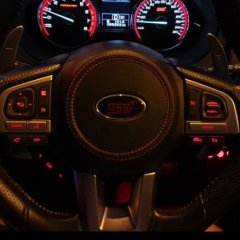

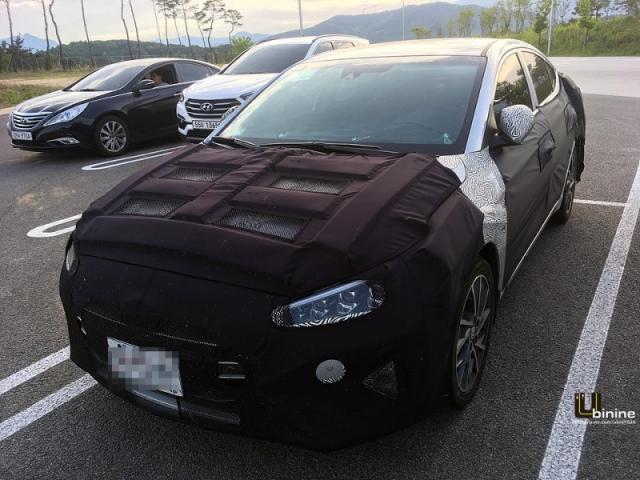
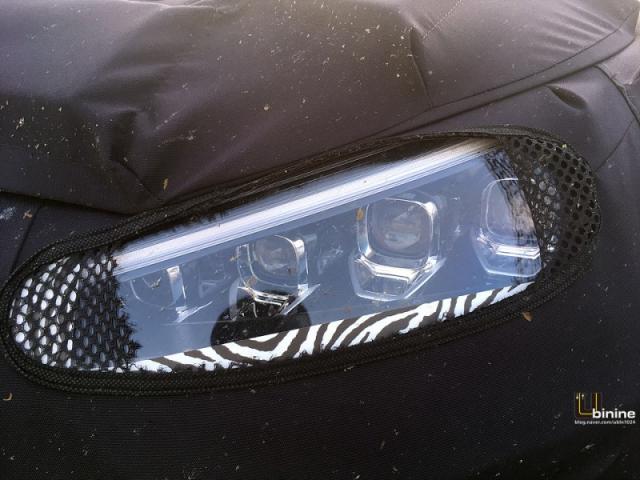
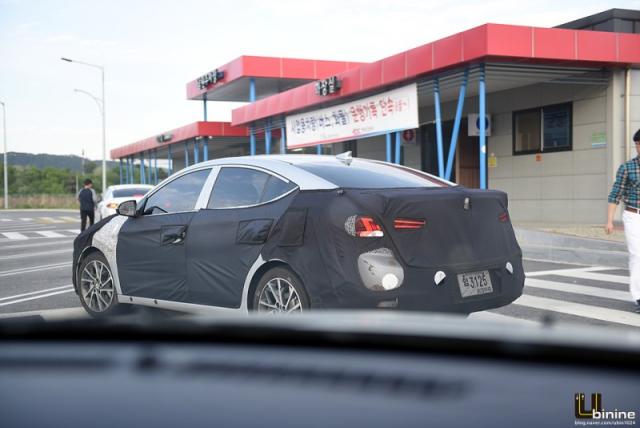


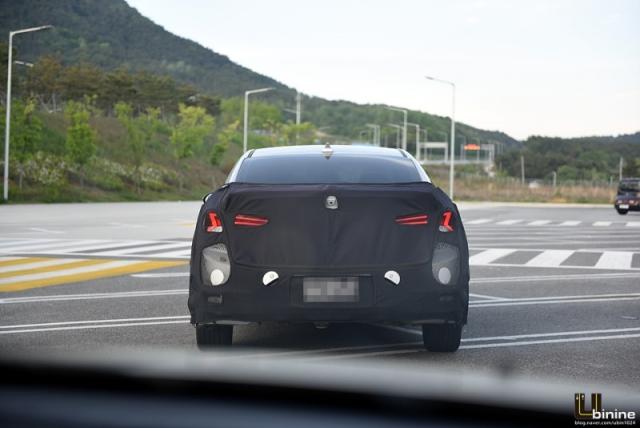


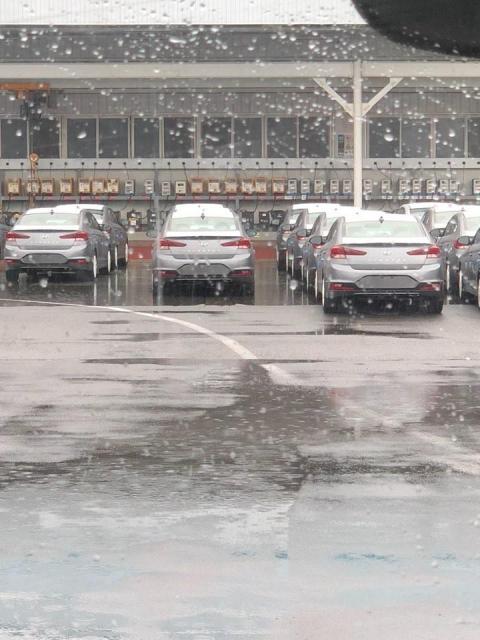
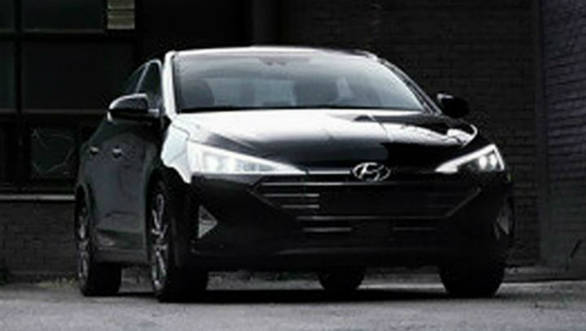
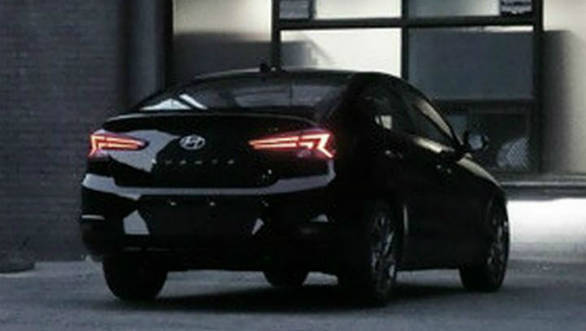
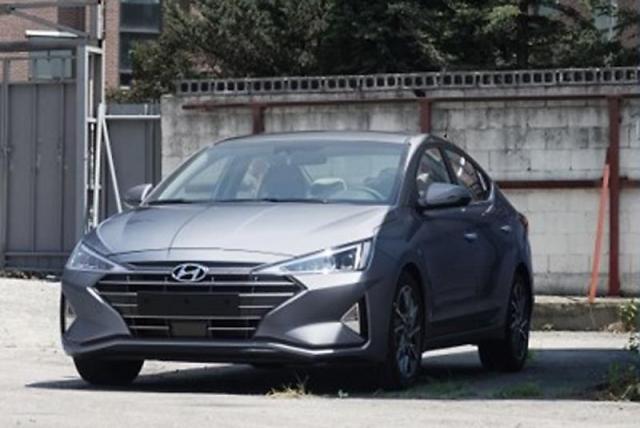
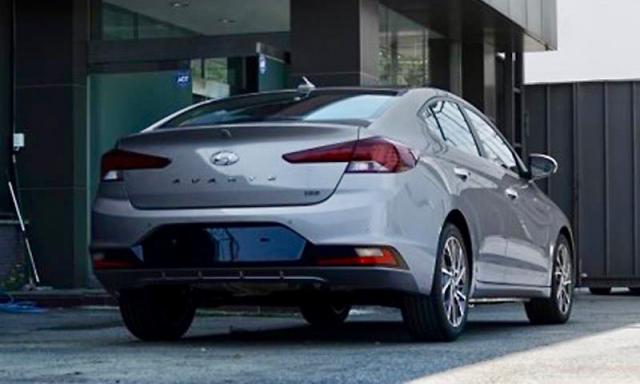



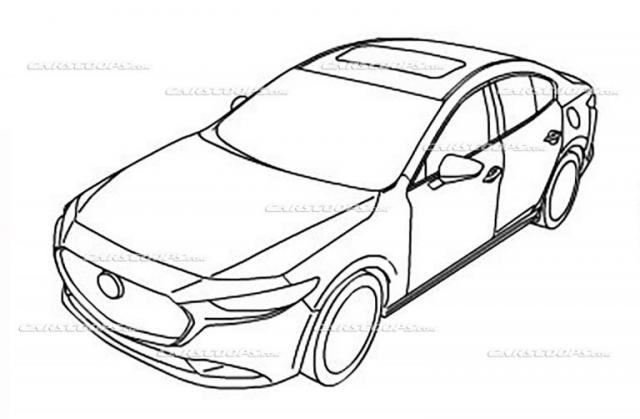
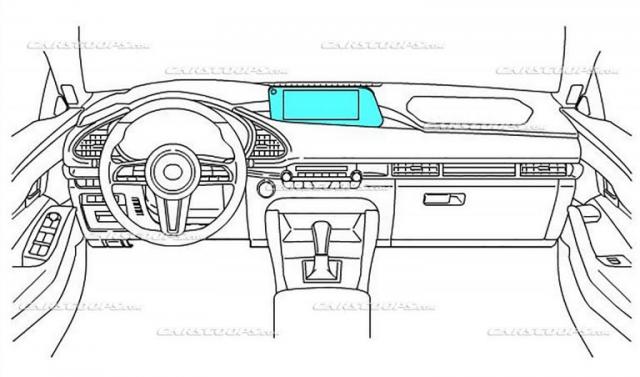

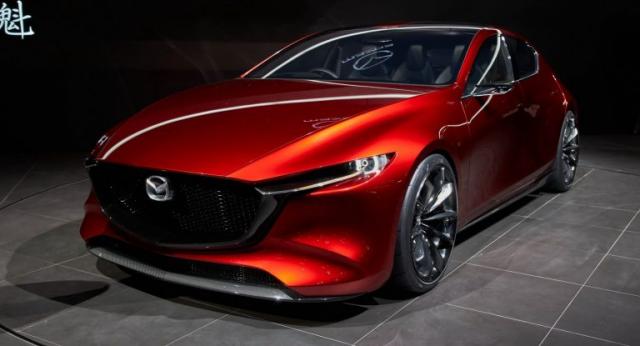
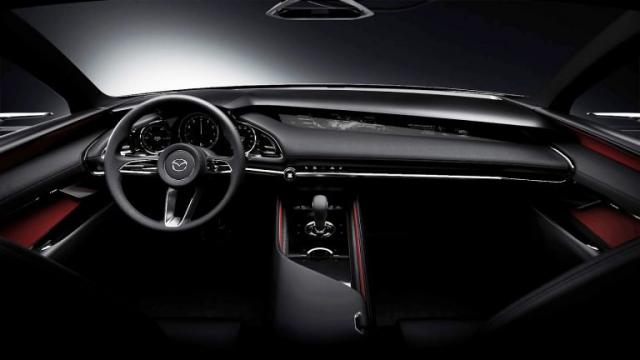

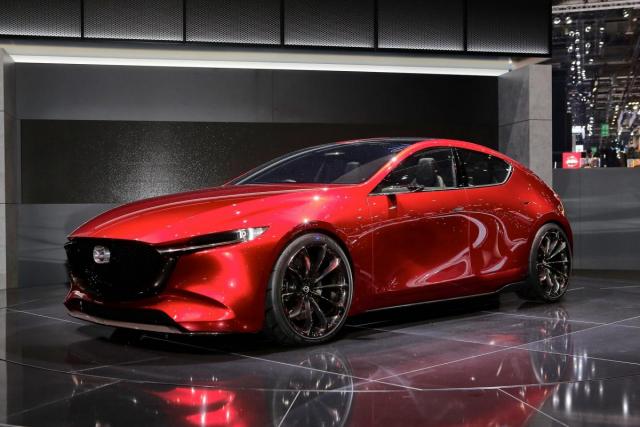
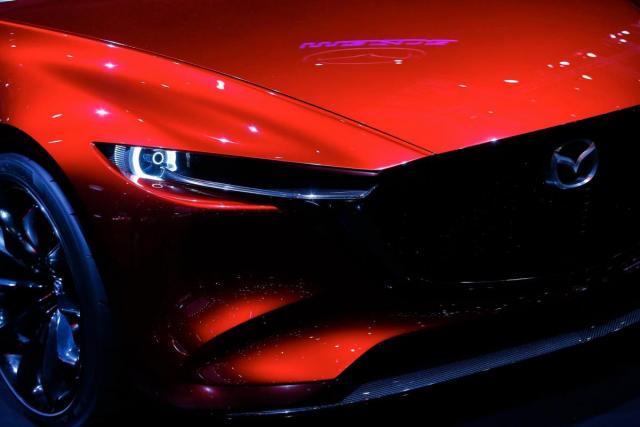
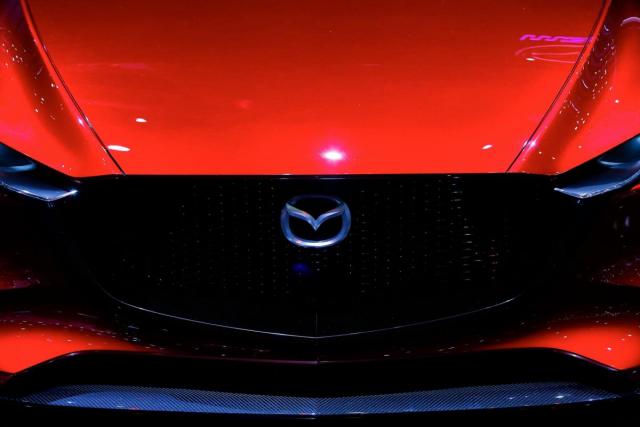
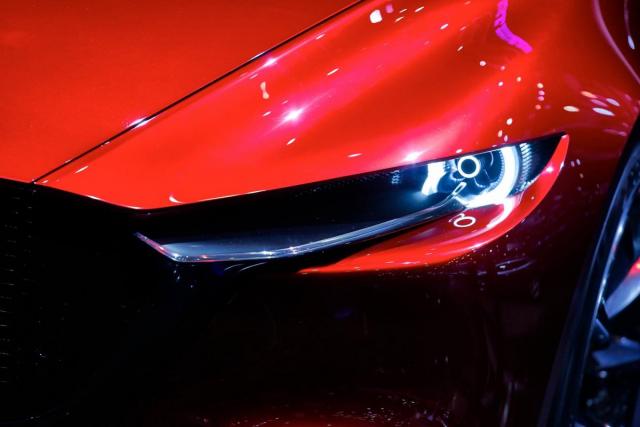
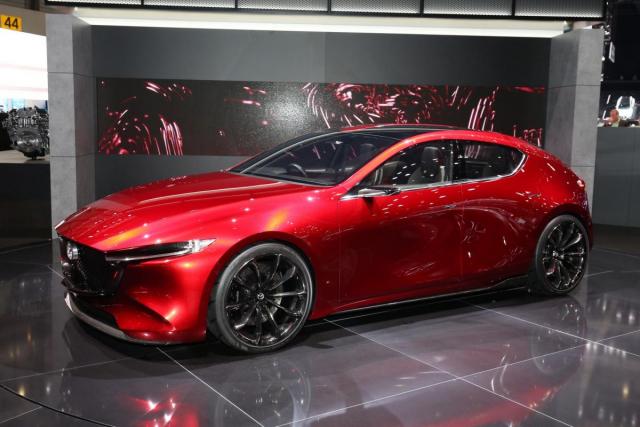
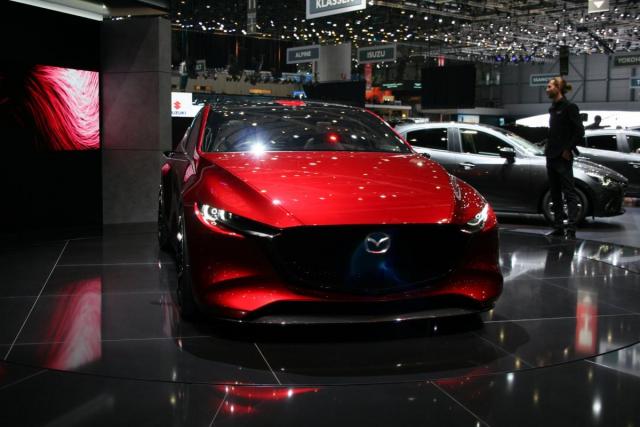



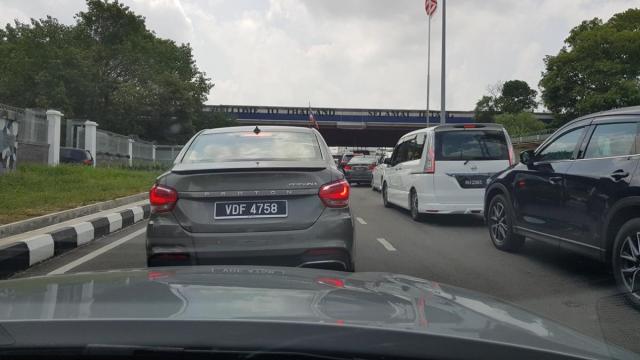
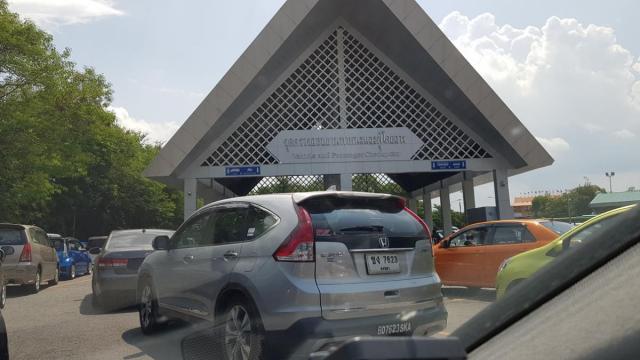


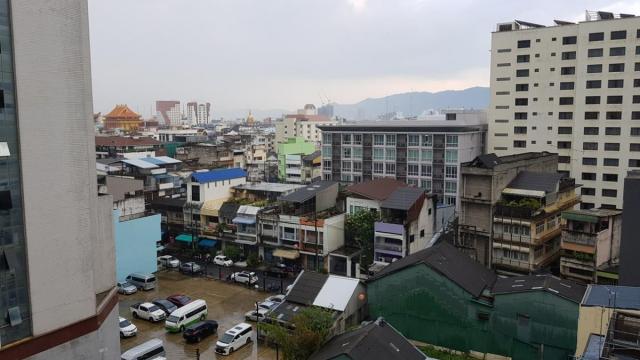







.png)